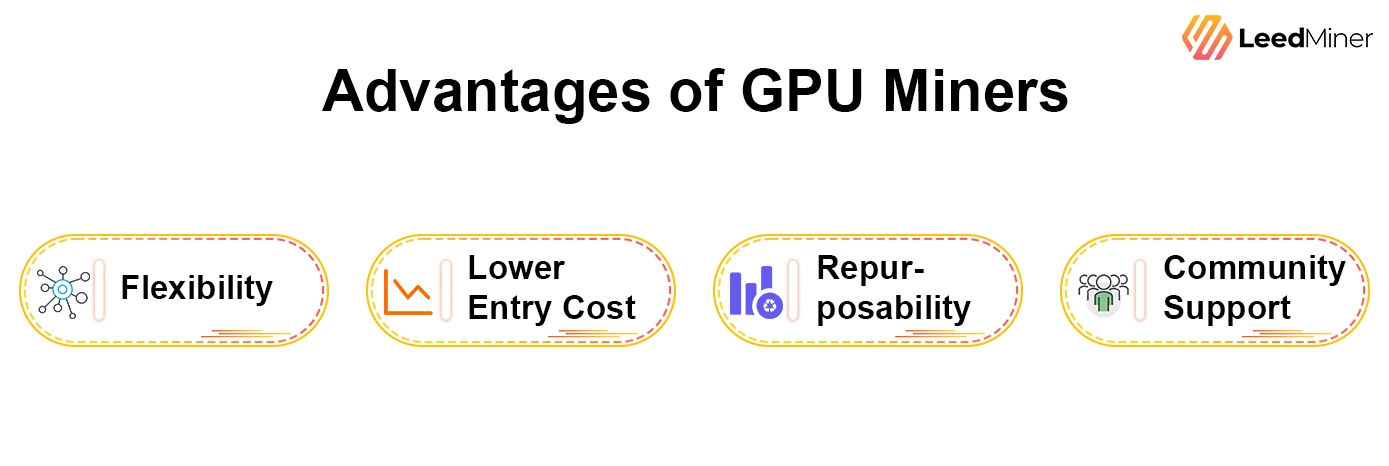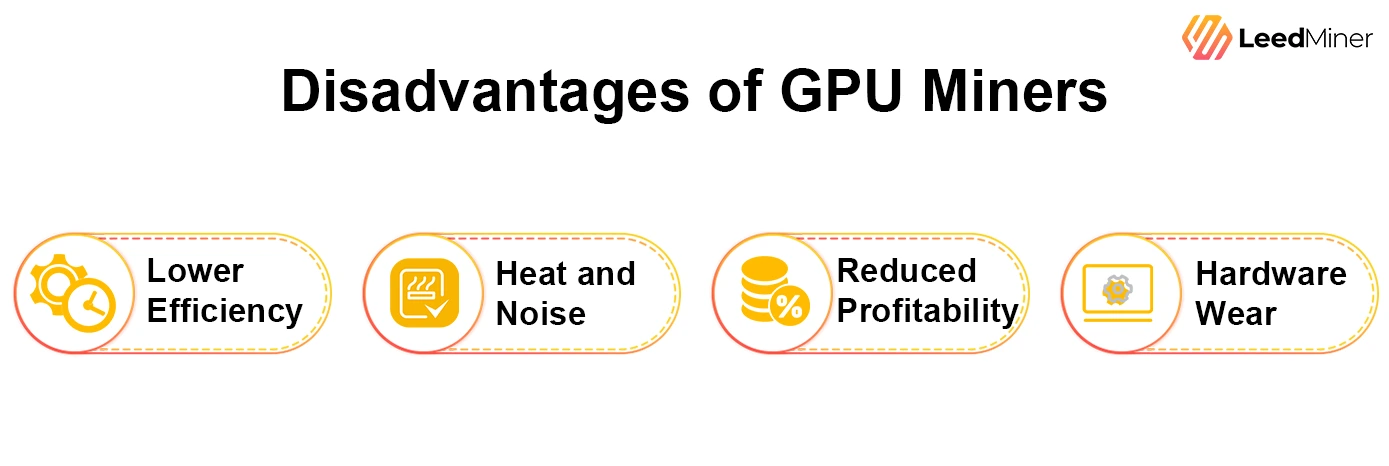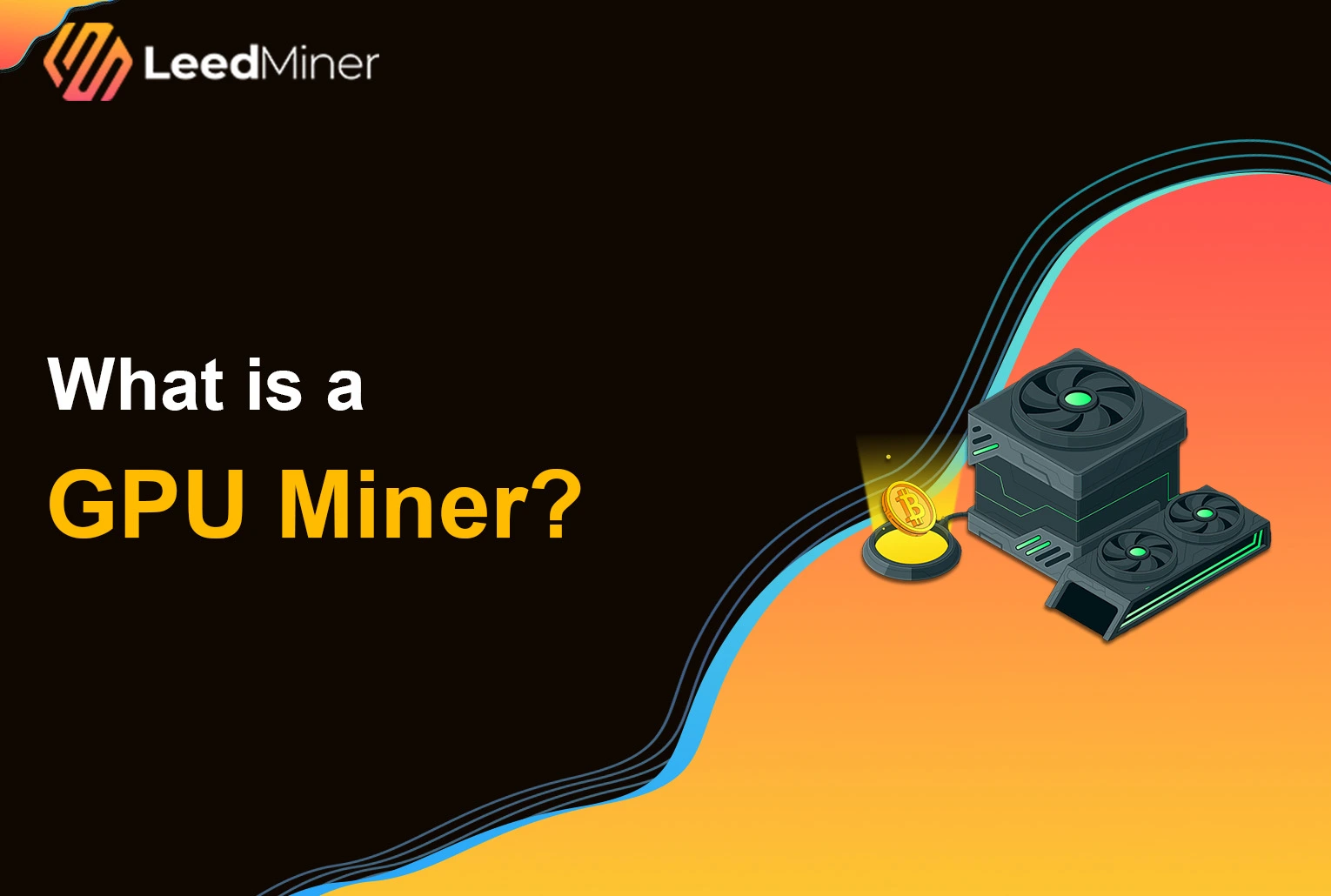SUMMARY
In the early days of Bitcoin, anyone could mine coins using a regular desktop computer’s CPU. But as more people joined the network and mining difficulty increased, CPUs became too slow and inefficient. This shift led to the rise of GPU mining — using graphics cards instead of CPUs to mine cryptocurrencies. Graphics Processing Units (GPUs) proved far better at handling the complex calculations required for mining, and soon became the standard for many cryptocurrencies.
What is a GPU Miner
A GPU miner is a computer that uses one or more graphics cards to mine cryptocurrencies. These machines can be:
- Custom-built mining rigs, assembled using components like GPUs, motherboard, power supply, CPU, RAM, storage, and frame.
- Pre-built GPU mining machines, designed specifically for crypto mining.
Unlike ASIC
How GPU Mining Works
At the core of GPU mining is the Proof of Work (PoW)
- The mining software assigns mathematical tasks to the GPU.
- The GPU performs parallel calculations to find a valid hash value for the current block.
- When a correct hash is found, it’s submitted to the network for verification.
- If accepted, the miner receives a reward in cryptocurrency.
GPUs are highly effective at repetitive, intensive computations, making them ideal for algorithms like Ethash, KawPow, and Autolykos.
Coins You Can Mine with a GPU
While Ethereum has moved to Proof of Stake (PoS) and is no longer mineable with GPUs, several coins are still friendly to GPU mining:
- Ethereum Classic (ETC) – Ethash algorithm
- Ravencoin (RVN) – KawPow algorithm
- Ergo (ERG) – Autolykos algorithm
Kaspa (KAS)
– kHeavyHash algorithm- Flux (FLUX) – ZelHash algorithm
Many of these coins attract GPU miners because they are ASIC-resistant, meaning they are designed to be unprofitable for ASICs to mine.
Advantages of GPU Miners

GPU miners remain popular for several reasons:
Flexibility
GPUs can mine many different coins and algorithms, switching between them based on profitability.
Lower Entry Cost
Compared to ASICs, starting with a used or budget GPU rig is often cheaper.
Repurposability
GPUs aren’t limited to mining — they can also be used for gaming, rendering, or AI development.
Community Support
Large user communities and open-source mining software make it easier for beginners to get started.
Disadvantages of GPU Miners

Despite their benefits, GPU miners also come with limitations:
Lower Efficiency
Compared to ASICs, GPUs consume more energy per unit of hashrate.
Heat and Noise
Multiple GPUs running at full power generate a lot of heat and noise, requiring good ventilation and cooling.
Reduced Profitability
As ASIC miners dominate the market, GPU profitability has decreased for many coins.
Hardware Wear
Running GPUs 24/7 can reduce their lifespan, especially if cooling is inadequate.
ASIC vs GPU Mining – A Quick Comparison
| Feature | GPU Miner | ASIC Miner |
|---|---|---|
| Efficiency | Lower (higher power draw) | Higher (optimized for mining) |
| Flexibility | High (multi-coin support) | Low (coin-specific) |
| Entry Cost | Lower (especially used rigs) | Higher upfront investment |
| Usability | Can be reused for other tasks | Only for mining |
The Future of GPU Mining
GPU mining has become less dominant as ASICs take over profitable coins and Ethereum transitions to PoS. However, the future isn’t entirely bleak for GPU miners:
- New coins with ASIC-resistant algorithms continue to emerge.
- GPU mining pools offer better profit-sharing for small miners.
- GPUs may shift from mining to other decentralized computing tasks (AI, rendering, Web3 hosting).
There’s also growing interest in using GPUs for layer-2 networks, zero-knowledge proofs, and general-purpose computation in crypto ecosystems.
CONCLUSION
A GPU miner is a key part of cryptocurrency’s early evolution. While ASICs now dominate major networks, GPU mining still has a place — especially for newcomers, experimenters, and those mining niche or emerging coins. With the right strategy, proper setup, and up-to-date knowledge, GPU mining can still be a rewarding and educational entry point into the world of crypto.



